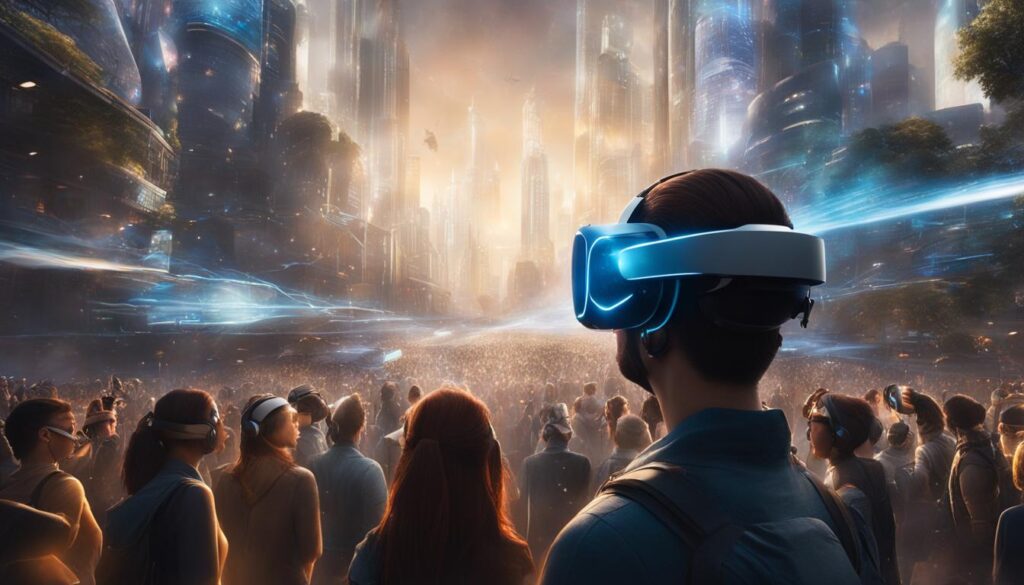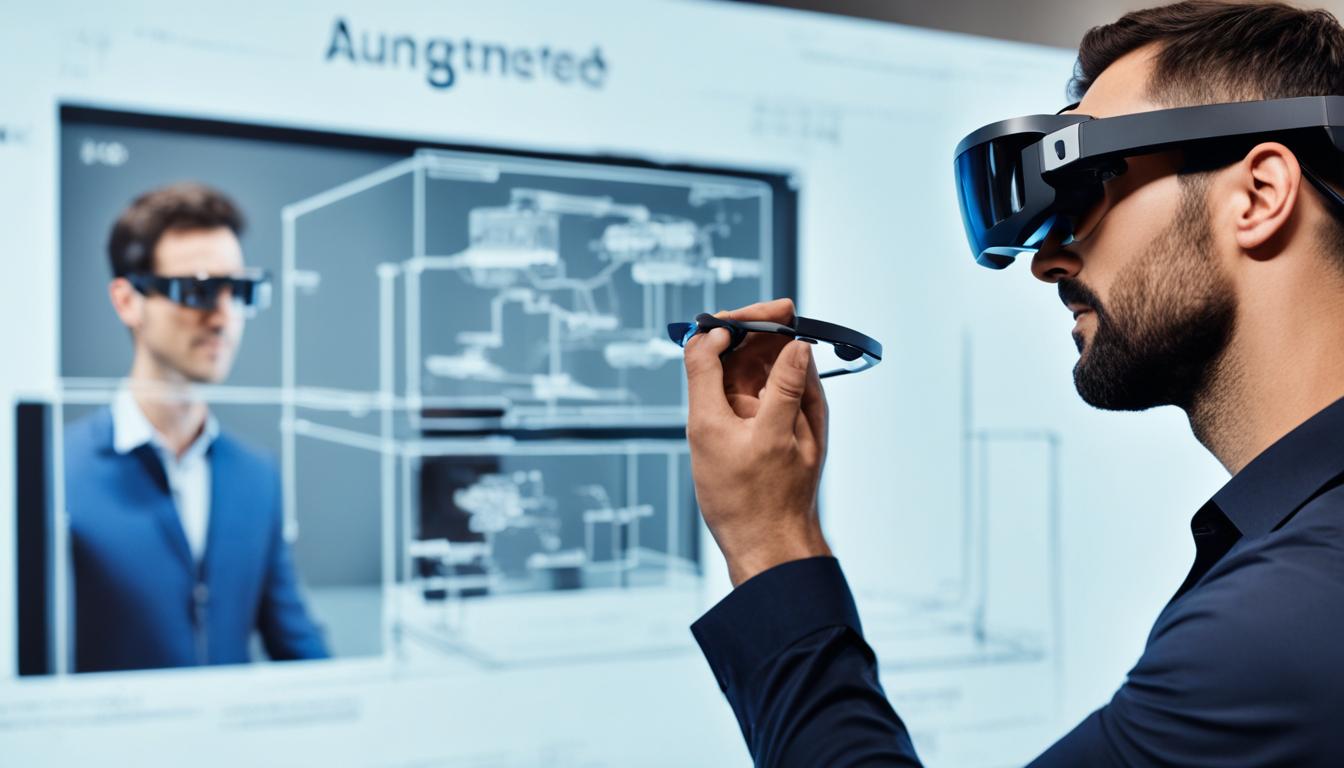Augmented reality (AR) has been gaining traction as a transformative technology, with applications ranging from gaming to enterprise solutions. As the demand for AR devices continues to grow, many are curious about when AR will become available in bulk. In this article, we will explore the timeline for the bulk availability of augmented reality technology and the factors influencing its adoption.
According to CCS Insight, the sales of virtual and augmented reality devices are projected to soar in the coming years. By 2022, it is estimated that 14 million VR and AR devices will be sold, with this number expected to skyrocket to 88 million by 2026. The consumer AR segment is poised for a significant boost with the introduction of new smart glasses in 2023. Emphasizing the importance of content and the metaverse, investments in immersive experiences are set to drive adoption among both consumers and businesses.
In terms of device shipments, VR headsets are expected to dominate the market in 2022, accounting for 93% of all shipments. Standalone VR headsets like Meta’s Quest 2 are projected to experience continued growth. On the AR front, device shipments are predicted to increase by over 100% in 2022 and a staggering 300% in 2023. The arrival of new smart glasses is expected to make AR devices more accessible and pave the way for broader adoption in the future.
Contents
- 1 Factors Influencing Augmented Reality Availability
- 2 The Current State of the Gaming and AR Tech Sectors
- 3 The Relationship between Immersive Technologies and the Economy
- 4 Conclusion
- 5 FAQ
- 5.1 When can we expect augmented reality to be available in bulk?
- 5.2 What factors influence the availability of augmented reality?
- 5.3 What is the current state of the gaming and augmented reality tech sectors?
- 5.4 How do immersive technologies impact the economy?
- 5.5 What is the future of augmented reality?
- 6 Source Links
Key Takeaways:
- According to CCS Insight, the sales of VR and AR devices are set to grow significantly in the coming years.
- The consumer AR segment is expected to kick-start with the launch of new smart glasses in 2023.
- Investment in immersive content and the metaverse are likely to drive adoption and appeal for both consumers and businesses.
- VR headsets are projected to dominate the market in 2022, accounting for 93% of device shipments.
- AR device shipments are predicted to increase by over 100% in 2022 and 300% in 2023.
With improvements in technology and the growing demand for AR experiences, the bulk availability of augmented reality devices is on the horizon. The launch of new smart glasses and advancements in display technologies are paving the way for wider adoption and everyday use of AR. While challenges remain, such as the development of cost-effective and high-resolution displays, the market forecast from CCS Insight points to significant growth in device shipments and strong demand from consumers and businesses alike.
As immersive technologies continue to evolve and investment in the metaverse expands, the availability of augmented reality in bulk is expected to become a reality sooner than later. Stay tuned for exciting developments in the world of AR.
Factors Influencing Augmented Reality Availability
The availability of augmented reality in bulk is influenced by various factors, including technological challenges and the development of display technologies. In order to meet the demands of users, AR headsets must possess displays that are extremely bright, lightweight, high resolution, and cost-effective. Let’s explore the different display technologies that are shaping the future of AR headsets:
MicroLED microdisplays
MicroLED microdisplays are an emerging display technology that offer advantages in brightness and pixel density. These displays have the potential to enhance the visual experience of AR by providing vibrant and crisp image quality. However, challenges still exist, such as limited resolution and color capabilities, which need to be addressed for wider adoption. Ongoing research and development are focused on overcoming these obstacles to unlock the full potential of microLED microdisplays.
Laser beam scanning displays
Laser beam scanning displays are being considered as a compact alternative for AR headsets. These displays provide efficient coupling to waveguide optics, enabling a more streamlined design. Laser beam scanning displays have the potential to deliver high-quality visuals with a wider field of view. Ongoing advancements in this technology aim to improve the overall AR experience by addressing size, weight, and integration challenges.
OLED-on-Silicon displays
OLED-on-Silicon displays are an established display technology that offers high resolution and vivid colors. These displays are well-suited for AR applications as they provide a visually immersive experience. However, the challenge lies in ensuring the scalability and cost-effectiveness of OLED-on-Silicon displays for mass production. Ongoing research and development efforts aim to optimize this technology and reduce manufacturing costs, making it more accessible for bulk AR availability.
Liquid Crystal-on-Silicon displays
Liquid Crystal-on-Silicon displays are another established technology that offers high-quality visuals for AR headsets. These displays provide excellent image stability and fast response times, which are crucial for a seamless AR experience. However, challenges exist in terms of brightness and power consumption. Ongoing advancements in Liquid Crystal-on-Silicon technology aim to improve these areas and make it a viable option for mass production of AR headsets.
Overall, the development of display technologies plays a critical role in the availability of augmented reality in bulk. Each technology, whether emerging or established, brings its own strengths and limitations. Ongoing research and innovation are essential to overcome the challenges and shape the future of AR devices, making them more accessible and widespread.
| Display Technology | Advantages | Challenges |
|---|---|---|
| MicroLED microdisplays | Brightness, pixel density | Limited resolution, color capabilities |
| Laser beam scanning displays | Compact, wider field of view | Size, weight, integration challenges |
| OLED-on-Silicon displays | High resolution, vivid colors | Scalability, cost-effectiveness |
| Liquid Crystal-on-Silicon displays | Image stability, fast response times | Brightness, power consumption |
The Current State of the Gaming and AR Tech Sectors
The gaming industry and the augmented reality market are both experiencing significant growth and demand. Let’s take a closer look at the current state of these exciting sectors:
Gaming Industry
The gaming industry continues to be a powerhouse, with strong engagement and robust revenues. Subscriptions and cloud-based game streaming are driving software and services revenues, contributing to the industry’s expected revenues of almost $50 billion by 2026. This growth is further fueled by the increasing popularity of gaming hardware, which is projected to reach wholesale revenues of $7 billion in 2024.
Augmented Reality Market
In the augmented reality market, there is a high demand for AR/VR headsets and XR (extended reality) devices. The wholesale revenues of XR devices are estimated to reach $1.1 billion in 2023 and $1.6 billion in 2024. This surge in demand is also attributed to the introduction of new AR devices, such as Apple’s Vision Pro extended reality headset, which is expected to drive adoption and innovation in the market.

As the gaming and augmented reality industries continue to evolve and expand, it’s an exciting time for technology enthusiasts and consumers alike. The combination of immersive gaming experiences and the accessibility of AR/VR headsets is reshaping the way we interact with digital content.
Forecasted Revenues
| Year | Gaming Industry | Augmented Reality Market |
|---|---|---|
| 2022 | $50 billion (expected through 2026) | N/A |
| 2023 | N/A | $1.1 billion |
| 2024 | $7 billion | $1.6 billion |
With the continuous advancements in gaming subscriptions, hardware, and the introduction of new AR/VR devices, the future of the gaming and augmented reality tech sectors is promising. Embrace the possibilities and get ready for an immersive and thrilling future!
The Relationship between Immersive Technologies and the Economy
Immersive technologies, such as VR and AR devices, have a significant impact on both consumer markets and the economy as a whole. The adoption of VR and AR devices in business settings was accelerated by the COVID-19 pandemic, with sales of headsets to enterprises projected to reach 2.6 million in 2022.
The changing nature of work and the realization of the benefits of immersive technology have led businesses to explore new applications and integration of these devices. Despite some returning to pre-pandemic working trends, the use of immersive technology in the workplace is expected to continue.
The enterprise adoption of VR and AR devices has opened doors to new opportunities and innovations. From training and simulations to remote collaboration and virtual meetings, immersive technologies have proven their value in enhancing productivity and transforming traditional workflows.
In addition to enterprise use, the consumer adoption of VR and AR devices is also contributing to the overall economy. As more individuals embrace these technologies for gaming, entertainment, and personal usage, the demand for VR and AR devices grows, leading to a thriving market.
Investment in immersive content further fuels the impact on the economy. As businesses recognize the potential of VR and AR in creating immersive experiences, they invest in content creation, leading to job creation and economic growth. This investment also drives innovation, as developers explore new ways to leverage immersive technologies across various industries.
Enterprise Use of VR and AR Devices:
- Training and simulations
- Remote collaboration and virtual meetings
- Product design and visualization
- Marketing and advertising
- Customer experience and engagement
- Maintenance and repairs
VR and AR Headset Sales to Businesses:
| Year | VR Headset Sales to Businesses |
|---|---|
| 2020 | 1.2 million |
| 2021 | 1.8 million |
| 2022 (projected) | 2.6 million |

Conclusion
The future of augmented reality holds great promise, with the potential for bulk availability of AR devices expected to increase in the coming years. Advancements in display technologies and the launch of new smart glasses are paving the way for wider adoption and everyday use of AR.
Although there are still technological challenges and market dynamics to overcome, the market forecast from CCS Insight predicts significant growth in device shipments and strong demand from both consumers and businesses. This indicates a bright future for augmented reality.
As immersive technologies continue to evolve and investment in the metaverse expands, the availability of augmented reality in bulk is likely to become a reality sooner than later. Exciting developments in the world of AR are on the horizon, so stay tuned for the latest updates.
FAQ
When can we expect augmented reality to be available in bulk?
The availability of augmented reality in bulk is influenced by various factors, including technological challenges and the development of display technologies. While there is no specific timeline, advancements in display technologies and the launch of new smart glasses are expected to pave the way for wider adoption and everyday use of augmented reality.
What factors influence the availability of augmented reality?
The availability of augmented reality is influenced by technological challenges and the development of display technologies. AR headsets require displays that are extremely bright, lightweight, high resolution, and cost-effective. Emerging display technologies like microLED microdisplays and laser beam scanning displays offer advantages in brightness and compactness, respectively. Established display technologies like OLED-on-Silicon and Liquid Crystal-on-Silicon are preferred for their high resolution and immersive capabilities. Ongoing developments in these technologies are expected to shape the future availability of AR devices in bulk.
What is the current state of the gaming and augmented reality tech sectors?
The gaming industry continues to be a steady performer, with strong engagement driven by subscriptions and expected revenues approaching $50 billion through 2026. Gaming hardware remains a bright spot, with wholesale revenues projected to reach $7 billion in 2024. In the augmented reality market, headsets are in high demand, with XR devices expected to generate wholesale revenues of $1.1 billion in 2023 and $1.6 billion in 2024. The introduction of new AR devices, such as Apple’s Vision Pro extended reality headset, is expected to push the market to new levels of adoption and innovation.
How do immersive technologies impact the economy?
Immersive technologies like virtual reality and augmented reality have a significant impact on both consumer markets and the economy as a whole. The COVID-19 pandemic accelerated the adoption of VR and AR devices in business settings, with sales of headsets to enterprises projected to reach 2.6 million in 2022. The changing nature of work and the realization of the benefits of immersive technology led businesses to explore new applications and integration of these devices. Additionally, the combination of consumer and business adoption, along with investment in immersive content, is set to create a thriving market for VR and AR devices, contributing to the overall economy.
What is the future of augmented reality?
The future of augmented reality looks promising, with the availability of AR devices in bulk expected to increase in the coming years. While there are technological challenges and market dynamics to consider, the market forecast predicts significant growth in device shipments and strong demand from both consumers and businesses. Advancements in display technologies and the launch of new smart glasses are paving the way for wider adoption and everyday use of AR. As immersive technologies continue to evolve and investment in the metaverse expands, the availability of augmented reality in bulk is likely to become a reality sooner than later. Stay tuned for exciting developments in the world of AR.
Source Links
- https://www.idtechex.com/en/research-article/what-does-the-future-hold-for-ar-display-technology/30078
- https://www.ccsinsight.com/company-news/economic-uncertainties-dampen-outlook-for-virtual-and-augmented-devices-but-long-term-potential-remains-strong/
- https://www.ces.tech/articles/2023/august/for-digital-fun-gaming-and-ar-lead-tech-markets.aspx




